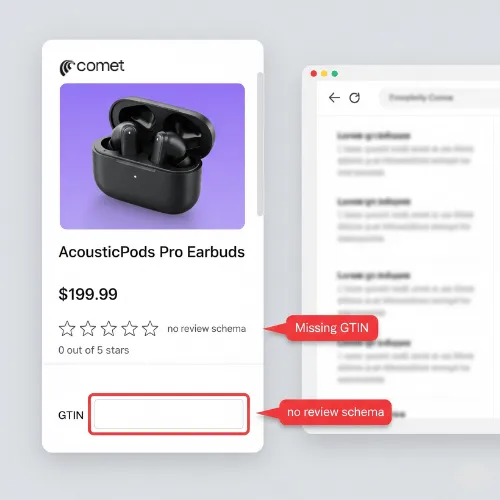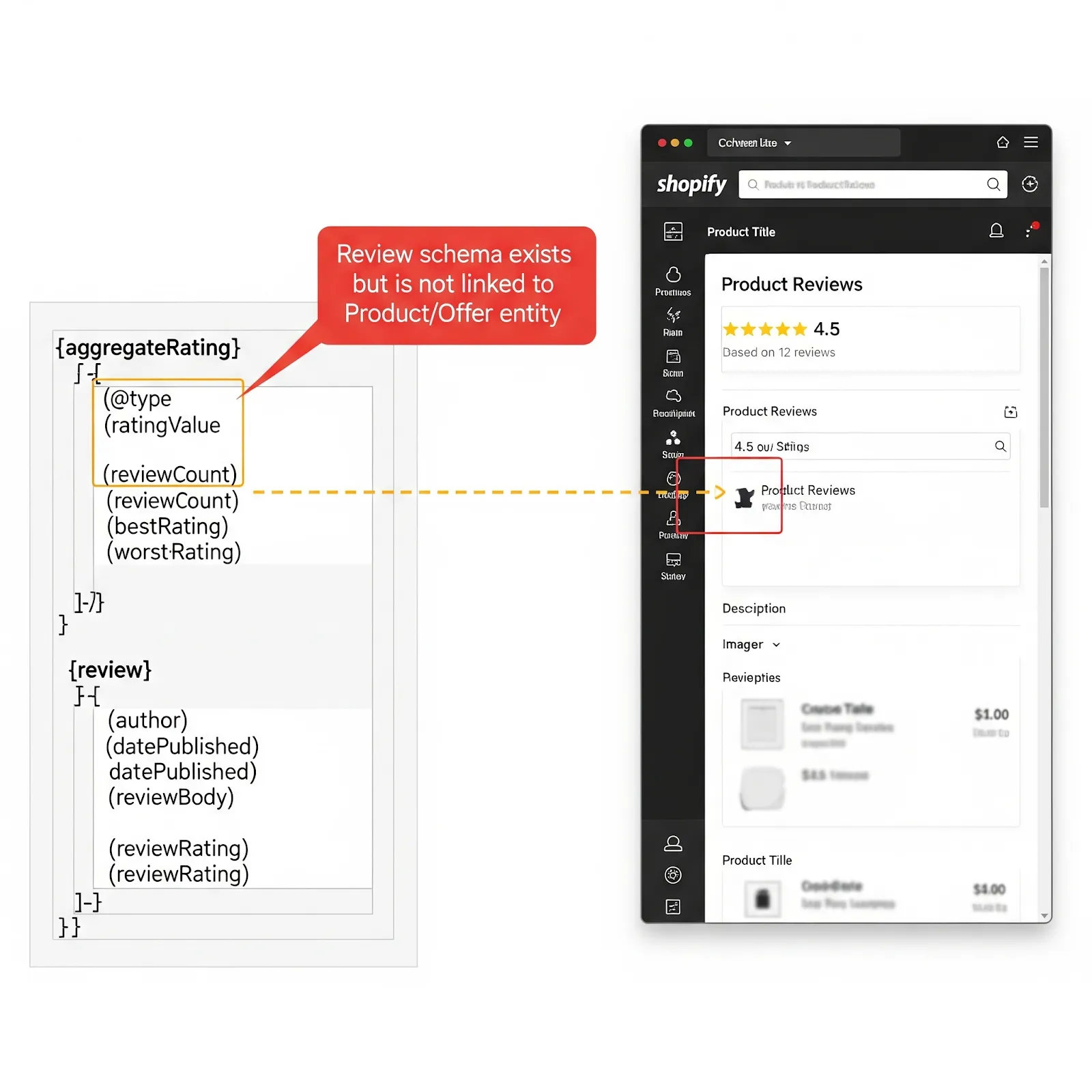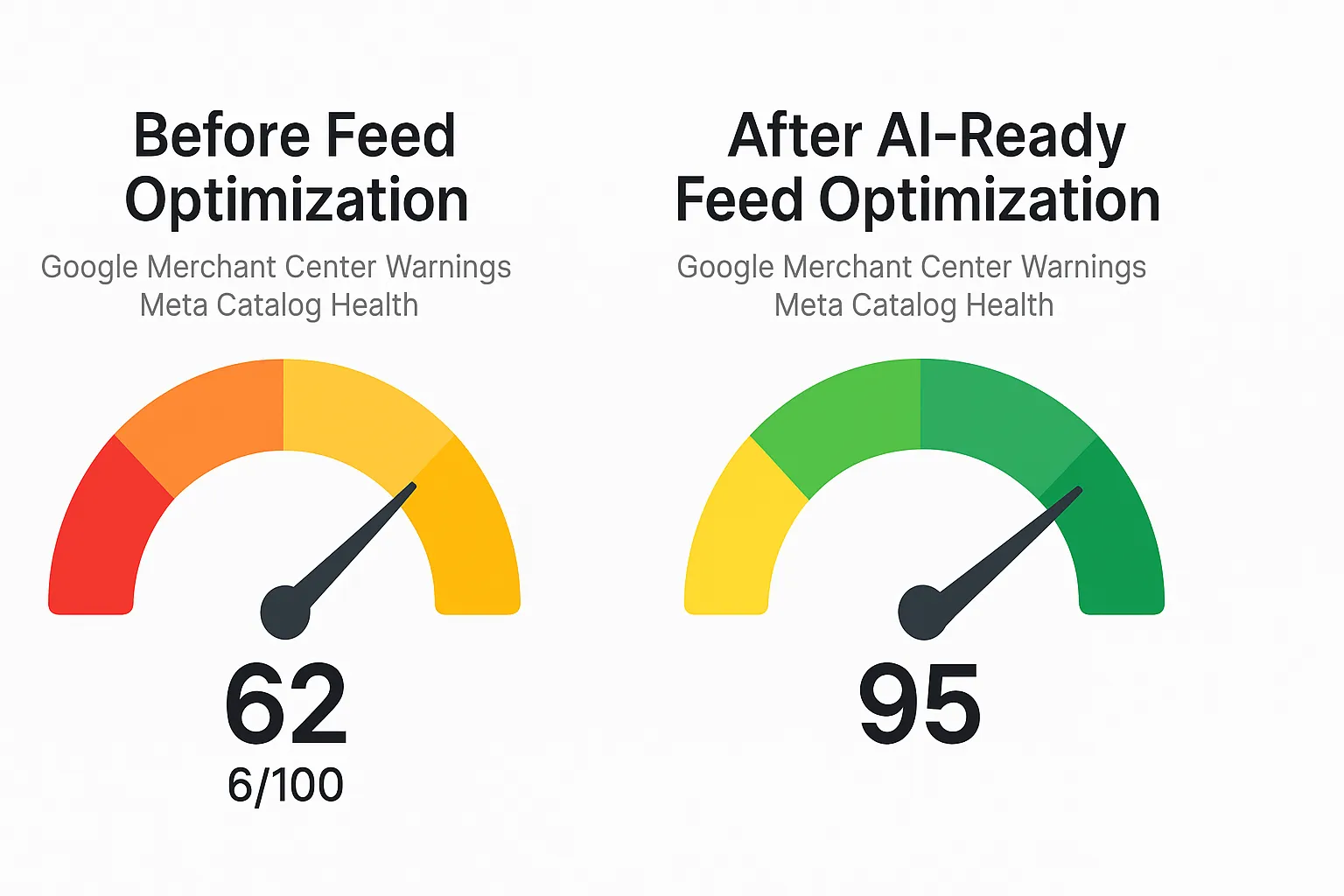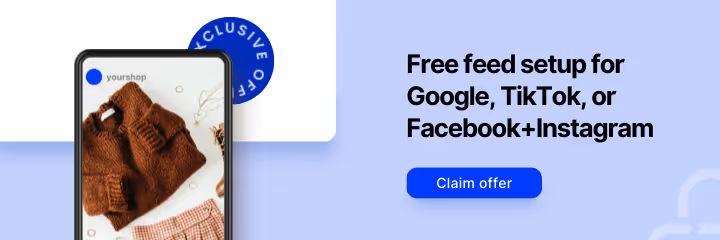Forget keywords and audiences for a second. AI shopping agents like Shopify’s ChatGPT checkout (currently in private beta) and Perplexity’s Comet browser (live since July 2025) are letting shoppers instantly buy directly from search. Your carefully optimized bids mean nothing if your feed isn’t pristine.
Your Bids Are Perfect, So Why Are Impressions Dropping?
Ever watched your impressions tank despite flawless bids and targeting? If you’ve managed product feeds for Google Shopping, you’ve seen warnings like “Limited Performance due to Missing Identifiers”. While this warning is specific to Google, it serves as a critical signal for a broader problem: the same gaps in GTINs or stale inventory data that hurt your performance in Google's ecosystem are precisely what prevent AI agents from accurately indexing your products. These data gaps can block your products from appearing in AI-driven experiences like ChatGPT’s product cards and Comet’s sidebar recommendations.

AI agents don’t care about your ad spend; they need clean, structured data to find your products.
Shopify’s ChatGPT checkout pulls real-time details for queries like “best wireless earbuds under $150,” but only with valid GTINs and schemas. Perplexity CEO Aravind Srinivas says the service processed 780 million queries in May 2025. Early observations suggest Comet’s assistant is more likely to surface products that include a complete Product and Offer schema.

Perplexity Comet’s “Citation” Ranking: How Your Feed Wins or Loses
Comet launched in July 2025 as Perplexity's AI-powered browser with built-in shopping capabilities and an always-available AI assistant. Rather than traditional keyword ranking, Comet's assistant can compare products across websites, handle shopping tasks, and execute complete workflows while maintaining conversation context.
To win Comet's organic traffic, you need to provide data that its AI assistant can trust and compare. This means going beyond basic product data and providing machine-readable schema.
- Reviews and Ratings: Pull structured review data (average rating, review count) from platforms like Yotpo or Stamped. Ensure this data is correctly mapped to the
aggregateRating schema on your product pages. Use a Shopify app to handle this, but critically,
verify it's working. - Images: Compress images to under 200 KB and host on a CDN for fast loading, essential for Comet’s sidebar assistant.
- Schemas: Apply Product and Offer schemas to make your data machine-readable. To be certain it's implemented correctly, validate it with Google’s Rich Results Test after deployment. This ensures Comet, and other bots, can properly read your data and give your products a citation.

Nail this, and your products dominate Comet’s recommendations, driving free clicks. Skip it, and competitors take over when shoppers search your category.
Shopify × ChatGPT Checkout: How to Prep Before the Beta Ends
OpenAI is working with Shopify to integrate checkout directly into ChatGPT, with early versions being presented to some brands. Code strings including "buy_now," "shopify_checkout_url," and product ratings have been discovered in ChatGPT's public web bundle. What is clear evidence this integration is under active development.
Must-haves for when it launches:
Inventory: Keep your inventory data current and accurate to avoid showing out-of-stock products. AI platforms pull from your existing product feeds and APIs.
Variant: Every size, color, or style needs Product and Offer schemas. Generic feeds get ignored.
GTINs: Valid Global Trade Item Numbers are mandatory. Use Google Merchant Center to spot gaps.

Fix these now to capture some of ChatGPT's 37.5 million prompts per day before competitors lock in.
Shopify’s New Guardrails: What You Need to Know
Shopify and OpenAI are working to ensure a secure and controlled checkout experience within ChatGPT. Rather than new merchant-configurable guardrails, the security is handled by Shopify’s core checkout technology, which is designed to meet compliance requirements like GDPR, CCPA, and PCI DSS. While the integration is in private beta, recent reports indicate that OpenAI plans to take a commission on sales completed within ChatGPT, similar to other platforms. This means the platforms will have built-in quality controls to protect the user experience and platform revenue.
To prepare for this, sync your inventory and pricing in real-time, and ensure your variants match the checkout process. Don’t let sloppy data cost you sales when the platform’s native quality checks redirect shoppers elsewhere.
Campaign Impact You Can Measure Immediately
A clean feed delivers immediate, measurable returns beyond these new platforms. It cuts Google Merchant Center warnings, boosting Shopping ad reach, and raises Meta catalog health scores, sharpening dynamic ad targeting. Clean data also drives better relevance and fewer wasted impressions in platforms like ChatGPT and Comet, which in turn leads to higher engagement rates and better organic visibility.
These platforms are currently organic goldmines—free, unlike Google Shopping’s paid placements. This is an urgent window of opportunity, especially as monetization models are being introduced. Recent reports indicate that OpenAI plans to take a commission on sales completed within ChatGPT, similar to other platforms. The time to optimize is now, before monetization kicks in and shifts the game.

Your Agent-Readiness Checklist
Stay AI-ready with this routine:

Review your robots.txt file to ensure OAI-SearchBot and PerplexityBot are not blocked. Check your server logs for these user-agents to confirm they are crawling your site.

This keeps your feed tight, avoiding visibility drops. One error can tank thousands in traffic.
Bottom Line

AI agents like ChatGPT and Comet are reshaping search and discovery. Your product feed is now the frontline for visibility in these new channels. A sloppy feed means zero visibility, and no amount of ad budget can fix that. In June 2025, AI agents accounted for
5.6% of desktop browser-based search traffic in the US, more than doubling their share from the previous year. This growing shift in user behavior directly challenges the established search engine model and means brands must adapt their strategies to ensure visibility within AI results. Optimize now to capture a growing share of user queries before these channels inevitably monetize.
Next Immediate Step
Run a diagnostic sweep to catch GTIN and schema errors. Map fixes to the checklist above. Every error you squash saves sales tomorrow.






%20).webp)